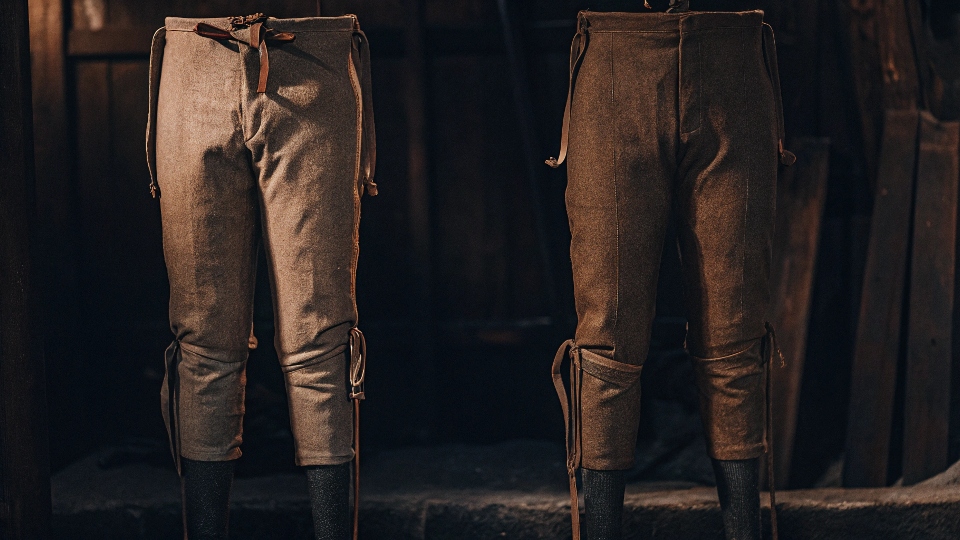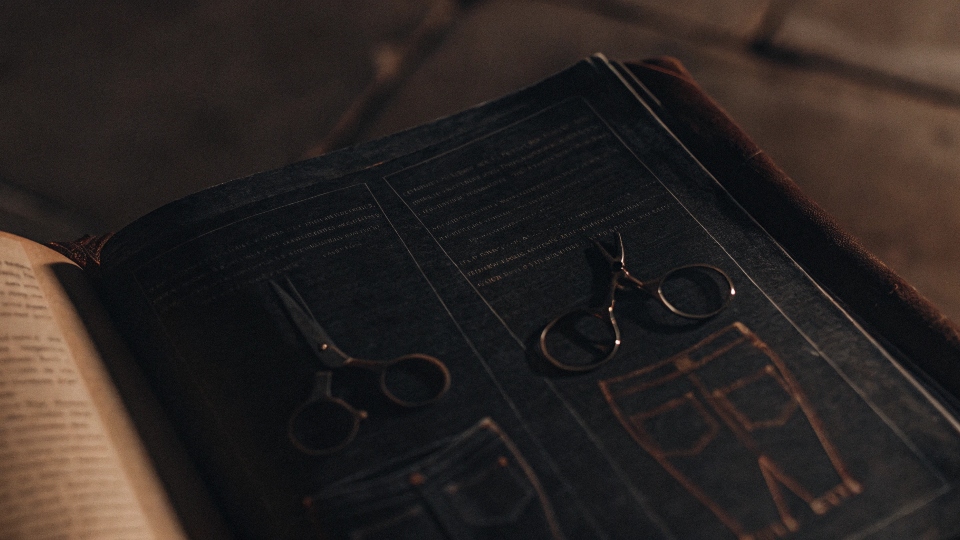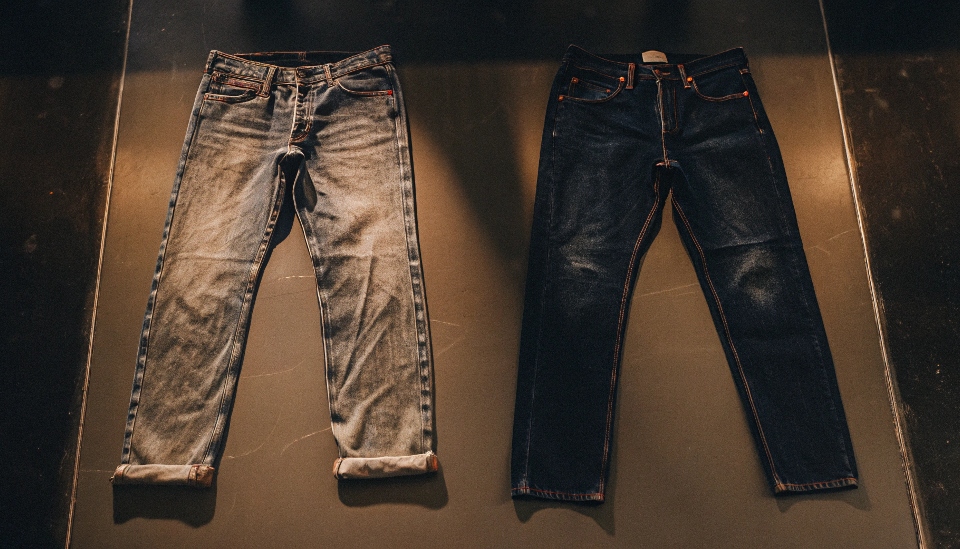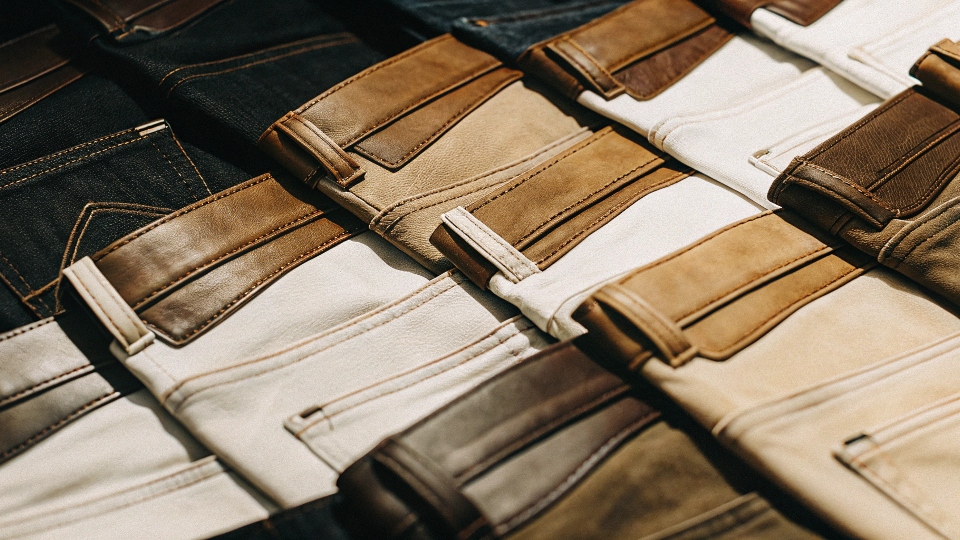You work with them, design them, and live in them every single day. But have you ever paused to ask why we call them "jeans"? This gap in your knowledge can feel like you're missing the first chapter of a story you should know by heart.
The name "jeans" originates from the French word for Genoa, Italy1 (Gênes). This city was famous for producing a sturdy, cotton twill fabric. Garments made from this Genoese cloth were called "jeans," and the name stuck with the iconic pants we know today.
The history of our industry is woven into the very words we use. As someone who has spent over two decades focused on denim, I find this story fascinating. It shows how the global trade of centuries past still echoes in our work. Levi Strauss2 himself was part of this global movement, an immigrant who came from Germany to America in 1851.
He didn't invent the fabric, but he and Jacob Davis brilliantly adapted these existing European materials to create a new, uniquely American garment. Understanding this history is understanding the DNA of every pair of pants we create.
Why do we call them a 'pair' of jeans?
You say "a pair of jeans" every day without a second thought. But then it hits you: it's a single garment. Why the "pair"? This linguistic oddity can make you feel like you're missing a basic piece of the puzzle about the clothes you design.
We say "a pair of jeans" because, until the modern era, trousers were constructed as two separate leg tubes—a "pair" of garments. These were put on one leg at a time and then tied or belted together around the waist.
This is one of my favorite pieces of clothing trivia because it connects directly to the history of garment construction3. Before sewing technology allowed for the complex patterns needed to create a single unified bottom piece, making two separate legs was simply more practical.
This historical reality became hard-wired into the English language. Even after trousers evolved into the single garment we know today, the term "a pair of..." stuck. It's the same reason we talk about "a pair of scissors" or "a pair of glasses"—single objects made from two distinct, mirrored parts.
Even though a modern jean is constructed as one piece, the ghost of its two-piece ancestor lives on in our language. For a designer like Dean, knowing this adds a layer of historical context to every pattern he creates.
| Time Period | Garment Construction | Terminology Used |
|---|---|---|
| Pre-16th Century | Two separate leg tubes, tied at the waist. | A "pair" of hose/trousers. |
| Post-16th Century | Two legs sewn together into a single garment. | The term "pair" remained due to habit. |
Why do we say "jeans" and never "jean"?
You're describing a product to a client. You say, "These jeans are perfect," and it sounds natural. But if you said, "This jean is perfect," it would sound strange and unprofessional. Why is the plural form mandatory for a single item?
We always say "jeans" because the word belongs to a class of nouns called "plurale tantum," meaning they only exist in the plural form. This grammatical rule is a direct legacy of trousers being considered a "pair" of items.
This grammatical rule is the direct result of the history we just discussed. Because pants were once two separate things, the brain locks them in as a plural item. It's a fascinating quirk of English that affects all kinds of words for single objects that have two key parts.
Think about it: scissors, pliers, tongs, trousers, pants, shorts. You'd never say "give me that scissor." You'd say "give me those scissors" or "give me that pair of scissors." The word "jeans4" follows this exact same rule. The one and only exception—and this is a key detail for professionals in our industry—is when you are referring to the fabric itself.
In that case, the singular "jean" is correct. For example, I might tell my team, "The new shipment of Italian jean cloth has arrived."
| Term | Meaning | Example Sentence |
|---|---|---|
| Jeans (plural) | The finished garment, the pants. | "I need to wash these jeans." |
| Jean (singular) | The raw material, the fabric from Genoa. | "This bolt of jean is 14 ounces." |
Are jeans the same thing as Levi's?
For millions of people, the word "Levi's" is the first thing that comes to mind when they think of jeans. This leads to confusion, with many using the terms interchangeably. For a designer, however, confusing the brand with the product is a fundamental error.
No. "Jeans" is the generic name for the category of pants made from denim or jean cloth. "Levi's" is the trademarked brand name of Levi Strauss & Co., the company that first patented and popularized rivet-reinforced blue jeans in 1873.
This is a classic case of a brand becoming so dominant that its name becomes shorthand for the entire product category. It’s what marketers call a proprietary eponym, like when people say "Kleenex" for any tissue or "Xerox" for any photocopy. Levi Strauss & Co. achieved this through incredible innovation and marketing.
The story is legendary: a tailor named Jacob Davis figured out that putting copper rivets5 at stress points could make work pants incredibly durable.He didn't have the money to patent his idea, so he wrote to his fabric supplier, Levi Strauss. Together, they got the patent in 1873 and created the modern blue jean.
Their product was so revolutionary and so successful that the Levi's brand became synonymous with "jeans" in the public mind. But for us in the industry, the distinction is crucial. "Jeans" is what we make; "Levi's" is the pioneering brand that created the blueprint.
| Concept | Definition | Relevance to Denim |
|---|---|---|
| Jeans | A generic category of clothing. | The product type we design and manufacture. |
| Levi's | A specific, trademarked brand name. | The company that patented the rivet-reinforced version. |
Why do jean styles have names and numbers?
You look at the most iconic jeans in history: Levi's 501, Lee 101, Wrangler 13MWZ. Why the cryptic codes? To an outsider, they're just numbers. But to a designer or manufacturer, they are a powerful language of fit, function, and identity.
Jean styles6 have names and numbers to serve as a precise, standardized code for communicating the exact cut, fabric, and fit of a garment. This system is vital for both internal production consistency and external consumer loyalty.
From my factory floor, these numbers are everything. A code like "Style 72B" is our bible for a specific product. It tells my cutters which pattern to use, my sewing team what thread and stitch density to apply, and my finishing department what hardware is required.
It eliminates ambiguity and ensures that the 10,000th pair is identical to the first. For a brand, this code becomes its identity. A customer who loves the fit of a Levi's 501 doesn't have to try on dozens of pairs next time; they can walk into any store in the world and ask for it by name. It builds trust and a powerful sense of loyalty.
The number transforms a simple pair of pants into a specific, reliable product. For a designer like Dean, creating a successful, named or numbered fit is the ultimate goal—it's how you turn a great design into a timeless, iconic asset.
Conclusion
The name "jeans" tells a story of geography and history, born from Genoese fabric. The language we use, like "a pair," and the names we give them, define our entire industry.
-
Discover how Genoa's fabric production influenced the creation of modern jeans. ↩
-
Learn about Levi Strauss's pivotal role in the history of jeans and American fashion. ↩
-
Learn about various garment construction techniques and their historical significance. ↩
-
Explore the fascinating history behind the term 'jeans' and its connection to Genoa, Italy. ↩
-
Discover how copper rivets enhance the durability of jeans and their historical significance. ↩
-
Discover the variety of jean styles and what their names and numbers signify. ↩











